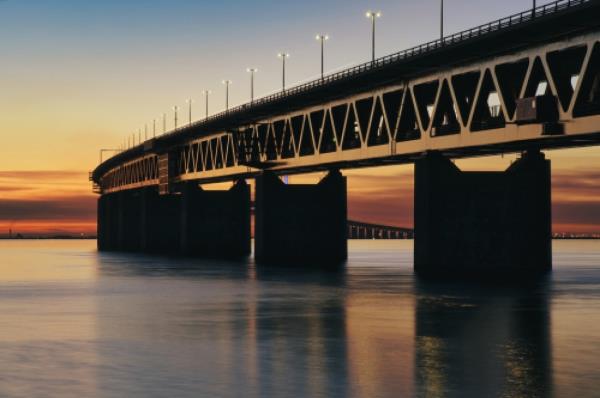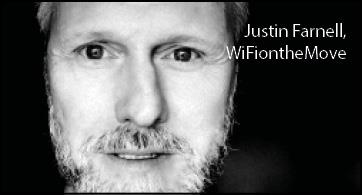10 October 2022

Fixed-wireless-access is a critical service that allows millions of Africans to get and stay online as well as bridge the digital divide. So, why is deployment slow and how is it being monetised? Robert Shepherd asks the experts
To be a part of the world’s digital economy, we all need reliable, high-speed internet access. Businesses, individuals, schools and hospitals all need to be online to best serve the people who rely on them.
One of the regions with the lowest access to high-speed internet is sub-Saharan Africa. According to data published by The World Bank, a mere 29% of the entire population uses the internet, never mind gigabit broadband. Compare that to 57% of the world’s people and 86% of those in Europe and central Asia and you’ll see the stark reality.
It’s a catch-22 situation: the lack of internet access has a negative economic impact on Africa, yet it makes sense for the most underdeveloped part of the world to not have the widespread, reliable, high-speed connectivity it desperately needs to support economic growth and development. Add a global pandemic to the mix and it’s fair to say the last few years have created challenges.
Nevertheless, FWA is becoming more important than ever as a growing African population looks to stay online whenever they go from one place to another.
Paul Colmer, exco member of Wireless Access Provider’s Association (WAPA) extols the virtues of FWA. “Two of the major disadvantages of non-fixed wireless services are the cost of data and the outdated per-gig billing model,” he says. “People don’t use connectivity per gig, nor are the networks built based on serving X-gigs per subscriber. Networks are built based on available throughput and the number of nodes or connected devices they can sustain. But the world is largely uncapped today, certainly for most people with fixed connectivity.”
He says that is increasingly reflected in the emerging billing models that charge for uncapped per day, week, month or whatever period the user chooses. “We trialled a number of these models in our TV White Space project conducted in less affluent rural areas and this emerged as the clear winner,” he says.
Colmer says another significant advantage of fixed wireless networks is the speed and relative ease with which they can be upgraded.” Since these tend not to be national networks with integrated cores that require forklift renewals whenever there is a transition to a new technology, they can provide all the benefits of new technologies, much faster,” he adds.
Justin Farnell, chief executive officer (CEO) at Johannesburg-based WiFiontheMove says that “correctly architected”, FWA allows the service provider to prioritise traffic and guarantee QOS across the network. “In terms of Wi-Fi provision, given its unlicensed band, this is more challenging, but we have developed at FibrePoynt our own patented beam forming solution which optimises the throughput to fixed router and mobile subscribers,” he says. “The cell size is smaller and can support far more users than a traditional GSM base station.”
So, if FWA really does offer more than its non-fixed relations, why is it not more widely available?
As far as Farnell is concerned, the biggest obstacle to FWA deployment remains the cost of backhaul, because “by virtue of the sheer size of the continent”, outside of the metros, fibre backhaul isn’t usually available, so the only other alternatives are expensive microwave or satellite links. “However, speaking of the latter, I do anticipate that Elon Musk’s Starlink will be a game changer, particularly in the peri urban and rural villages,” he adds. “I see Nigeria has already granted the company a licence to start delivering services, albeit I think Elon will have to wait much longer before he’s granted access by his home country South Africa.”
Satellite has always been a complementary technology that, although traditionally comparatively expensive, is reliable, according to Paul Colmer, exco member of Wireless Access Provider’s Association (WAPA). “It’s actually so dependable that it is the connectivity of choice for banks to connect ATMs in remote areas,” he says. “Its reliability makes it the perfect backup for sensitive applications and where dependability is non-negotiable.”
However, Colmer argues that burgeoning medium- (MEO) and low-Earth orbit (LEO) networks such as Starlink, Kuiper, O3B and more recently 1Web are taking the reins from the established geostationary (GEO) stalwarts, such as Intelsat. “They promise less expensive usage costs even if they are still quite costly to set up,” he adds.
“Nonetheless, they continue satellite’s differentiator: providing connectivity where there is otherwise none. As LEO satellites, they also improve latency and, being based on newer technologies, speeds and throughput, too.”
That said, Colmer says “there are several hurdles to fixed wireless access deployments in Africa” and that the service providers are constrained in many cases by spectrum limitations. With limited spectrum service providers must deal with a lot more interference, which harms the quality of services they can provide.

Justin Farnell, WiFiontheMove
“I see Nigeria has already granted the company a licence to start delivering services, albeit I think Elon will have to wait much longer before he’s granted access by his home country South Africa”
“Battery theft and equipment damage are two more major challenges,” Colmer continues. “They increase the cost to do business, which ends up impacting consumer prices – and they degrade qualities of service.” Nonetheless, Colmer cites a recent landmark ruling in which a South African judge gave three men 30-year sentences each for stealing cell tower batteries.
“It sends a clear message from South Africa’s judiciary, the intent of which WAPA supports. Telecommunications infrastructure is now essential infrastructure, which means damaging it is an aggravating factor when considering sentencing,” he continues. The change is clearly to dissuade theft and vandalism. It isn’t limited to cellular towers, but all telecommunications infrastructure, including wireless internet service providers (WISPs), who provide critical and sometimes the sole communications for many communities.”
Of course, a number of different ingredients go into the creation and deployment of FWA. So, just how does the combination of other/different technologies help with the deployment and impact of FWA?
Mpho Sefalafala, CEO at FibrePoynt, explains how his company is deploying its entire network architecture based on solar power.
“The micro base stations don’t suffer from downtime, which is a constant challenge with all the load shedding we’re experiencing in South Africa,” he says. “Furthermore, we are monitoring the equipment’s power consumption through our own custom designed IoT controller. With regard to optimising the QoS across the network, FibrePoynt is utilising the Android mobile subscriber app to relay signal strength back to its cloud management platform from the customer’s phone.”
So, let’s just imagine FWA is as fully-deployed as it can be and Africans are reaping the benefits of being connected. It still has to be monetised, otherwise there’s barely incentive for companies to invest in the service.
Farnell says “there is no doubt” that newer 5G entrants like Rain in South Africa, have been very successful in winning market share from the established GSM operators, with competitively priced and well packaged service offerings. “However, what about the many millions of consumers who can’t afford to spend US$30 to US$50 a month?” he adds. “FibrePoynt has identified at least 5 million households across South Africa where the monthly comms budget is between US$5 and US$20 and it this underserviced market where we are monetising fixed Wi-Fi access through (Flash) token payments – and Wi-Fi data products that are priced for people’s pockets on a daily and weekly basis.”
What’s more, Farnell says the revenue opportunity is huge because FWA allows operators to reuse their existing mobile networks, improve the quality of services, and provide faster and affordable connectivity.
Colmer adds that in WAPA’s census report released in November last year, it found that Wisps play a significant role in South Africa’s economy and that their revenues exceed R3bn. “They serve more than 200,000 homes and businesses and employ nearly 3,000 people,” he says. “The majority are micro enterprises and 63% have annual revenues in the R2m to R20m brackets. They operate over 5,480 high sites across the country, representing significant critical infrastructure that provides numerous vital services, including the support of emergency and response services.”
Now, it’s time to explore why FWA is key in bridging the digital divide in Africa.
Farnell says that “from a carrier perspective, it’s really a function of the lower cost of deployment” which enables those CAPEX savings to be passed onto the customer. “We’re seeing this as we roll out FibrePoynt networks across Gauteng in South Africa,” he continues. “Our WiFi mobile data offerings are a fraction of the cost of a typical GSM operator. Likewise the adoption of router based services in underserviced communities is transformative.”
Farnell highlights the fact that for many households, it’s the younger generation who are showing their elders how to connect and enjoy Wi-Fi (on their smart TV) at home. “Furthermore, by sharing router access on a high speed, uncapped service there is now capacity, besides the huge demand for video streaming and other entertainment services, to do e-learning and remote working,” he adds. “It also represents a big financial saving for that household, who have up until now, most probably been individually topping up expensive mobile pre-paid data accounts.”
Many WISPs use fibre for their backhaul between towers and into national backbone networks. Colmer believes that’s the most advantageous application for fibre at the moment in South Africa because it’s far too unreliable for people who need dependable connectivity either from the home or their business. “The challenge is the competitive and relatively unsophisticated nature of the trenching, which results in damaged infrastructure,” he says. “That has huge reliability implications that are the biggest threat to fibre’s public image.”
Colmer says Wisps can run viable businesses charging much lower rates than typical mobile network operators. He shares an example where “we ran a proof of concept as part of our TV White Space project” that investigated the pricing and business model. “It started at R10 per gigabyte and we proved it can work, including different ways to market the service, and a variety of offer packages,” he adds. “We honed the model by offering uncapped day, week and month passes. It’s profitable and it offers huge benefits to the people who need it most.”
What’s more, Colmer says Wisps can use a variety of methods, including hotspots, to provide affordable, quality connectivity to high-density populations in less formal settlements and particularly townships. “Thousands of income-earning daily commuters frequent taxi ranks and major arterial routes to and from commercial centres are all potential customers considering their alternative is much more expensive cellular data, particularly when bought in small data chunk,” he continues. “That creates unprecedented opportunity for Wisps providing fixed wireless access (FWA). The greater the number of frequent users they have, the more opportunity they have to add services, including advertising.”
Colmer also says that with higher quality networks, they can also commercially position themselves to extend a mobile network operator’s newer and more advanced services based on emerging technologies, such as 5G.
That brings us to the impact of the next-generation technology. 5G is making slow progress in Africa, with a mere six countries having launched the network so far. But just how important is it to the current use and future of 5G?
“It depends which markets you’re addressing,” says Farnell. “For the wealthier suburbanites and city dwellers it’s really accelerated data consumption and provided a critical communications channel and economic stimulant during the Covid lockdowns. The key to driving down the cost of that data is still a function of spectrum availability and additional tower capacity, but the initial resistance to the vast number of small cell 5G base stations required, seems to have fallen away.”

Paul Colmer, WAPA
“It sends a clear message from South Africa’s judiciary, the intent of which WAPA supports”
5G or no 5G, there are also numerous examples of where FWA is making a difference in Africa. WAPA has over 250 members and every one of them uses FWA in one form or another, says Colmer. “They are the backbone of connectivity throughout South Africa’s non-major urban centres,” he adds. “Without them, hundreds of thousands of South Africans would have little choice but to live in the connectivity wilderness, cut off from the digital economy.”
More specifically, Farnell explains how his firm has deployed FWA in different townships across South Africa, from Soschunguve north of Pretoria, to Cosmo City in the west of Johannesburg, to Tongaat on the coast of Kwa Zulu-Natal. “In each case we have licenced and launched a new Wi-Fi Service provider with a local partner from that community, under their own brand,” he says. “The uptake and support from those communities has been really encouraging.”
Farnell believes that one of the reasons his company’s solution is gaining acceptance, besides its affordability, is that the locals can become equipment hosts (where the FibrePoynt antennas and solar panel are mounted) and/or network sales agents on the ground. “So we are seeing a genuine positive feedback loop of bringing connectivity and stimulating economic activity within that community,” he says.
Although there are obvious challenges, Farnell is optimistic about the future.
“There are several reasons why FWA has become a viable technology alternative: deployment is relatively easy, whilst the time to market is shorter, and it can also expand wireless broadband coverage and potentially provide more than 90% accessibility to the population,” he says. “4G and 5G FWA services also have the capability to offer a fibre-like experience and enable connectivity service in areas where fibre-based service is impractical or takes a long time to deploy.”
Moreover, Farnell says return on investment is less than three years, meaning FWA can also be a more profitable proposition for operators. “In turn, addressing the last mile connectivity challenge by using unlicensed Wi-Fi spectrum offers new WISPs a fantastic opportunity to address the mass proliferation of Wi-Fi-enabled devices and the lower cost of deployment.”
In late August, Nokia and Safaricom celebrated an African first with their successful trial of 4G/5G FWA network slicing in Kenya’s Western Region. It’s been lauded as a major step toward launching commercial slicing services as more personalised network experience. Progress indeed.







